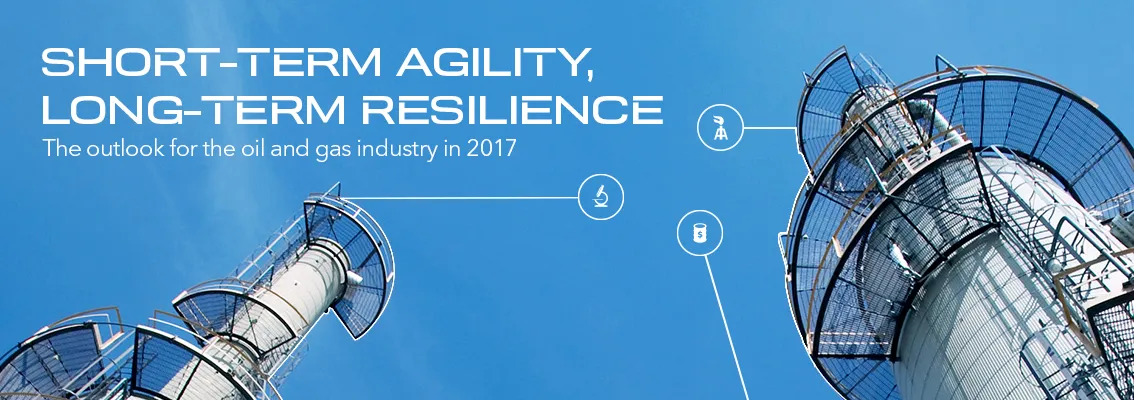The global oil and gas industry is actively transitioning into a more sustainable energy future, according to DNV GL research. Despite uncertainty about the future of global climate regulations, six out of ten (57%) oil and gas companies have targets for improving their climate performance. As many as eight out of ten meet these, even though only 13% think a global carbon price will be implemented in 2017.
These are some of the sustainability and environmental performance highlights taken from DNV GL's report Short-term agility, long-term resilience, which draws on a survey of 723 senior sector players1:
Four out of ten (38%) think their company is under increasing pressure to be more transparent about the environmental impact of its operations. Only 24% see sustainability primarily as a business cost.
“Our research reveals signs of strategic changes to ensure sustainability beyond cyclical patterns as the oil and gas industry adapts towards a more sustainable energy future,” says Cathrine Torp, VP Communications DNV GL - Oil & Gas.
More than one in four (27%) expect their business to invest or increase investments in renewable energy in 2017, and as many as 59% see these investments in renewables as a shift in their long-term business strategy.
However, only 39% of the organizations include climate change risk in their risk assessment and only 9% cite smart emission-reduction techniques as focus areas for their R&D work.
“We believe these numbers are too low. Most companies in the oil and gas industry need to future-proof their assets against the impact of climate change and, most importantly, there is no long-term future for the industry if we do not develop cost-effective carbon capture and storage technologies,” Torp continues.
The widely adopted DNV GL industry guidelines and Recommended Practices for CCUS have been developed through joint industry projects and serve as a benchmark for the new ISO CCS standard to be launched later in 2017.
Kaare Helle, Innovation manager at DNV GL - Oil & Gas is pointing to some recent developments in Norway. “I'm proud to be assisting customers at the forefront in Norway, where private and public companies, suppliers, research institutes and the government are developing value chains and hence business models for CO2 management needed to meet the Paris Agreement greenhouse gas emissions reduction targets,” Helle states.
Almost eight out of ten respondents see long-term opportunities for gas, while 77% believe gas will become an increasingly important component of the global energy mix over the next 10 years.
“We have advocated the increased use of gas in all sectors: gas power generation is now mainstream and there is still big untapped potential for gas in maritime transport and land-based heavy transportation, such as lorries and trucks. In combination with large-scale hydrogen from natural gas with CCS, the mid-term outlook for sustainable energy is promising,” Helle concludes.
Other findings include:
- Despite ongoing cost pressure, only 3% of respondents are listing scaling down sustainability initiatives as part of their cost management activities, and 16% expect increasing spending on emission controls.
- In the Asia Pacific region, 85% of the respondents believe gas will become an increasingly important component of the global energy mix, while 74% of respondents in North America and 72% of those in Europe agree.
1. The outlook for the oil and gas industry in 2017 is an industry benchmark study from DNV GL, the leading technical advisor to the industry. Now in its seventh year, the programme builds on the findings of six prior annual outlook reports, first launched in early 2011. During October and November 2016, we surveyed 723 senior professionals and executives across the global oil and gas industry, along with 14 in-depth interviews with a range of experts, business leaders and analysts. Two–thirds (66%) are employed by suppliers and service companies across the industry, while 26% of respondents work for oil and gas operators. The remaining respondents come from regulators and trade associations. The companies surveyed vary in size: 41% had annual revenue of USD500m or less, while 18% had annual revenue of more than USD5bn. Respondents were drawn from right across the oil and gas value chain, including publicly listed companies and privately held firms. They also represent a range of functions within the industry, from board-level executives to senior engineers.
